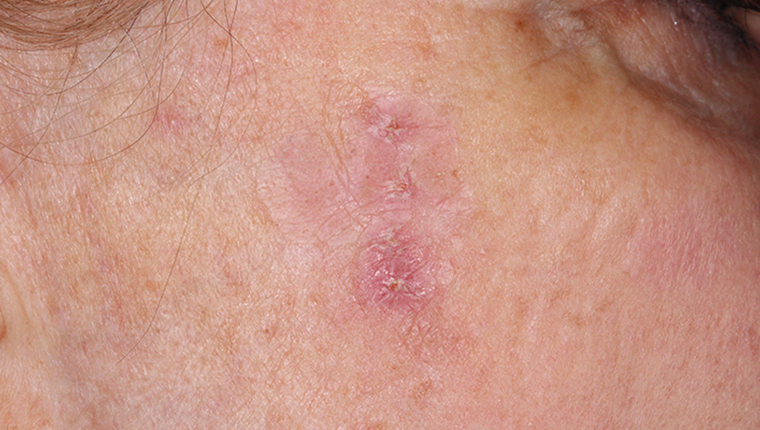Δερματολογία

Actinic keratosis
Actinic keratoses are very common skin lesions, which are not skin cancers. A number of these conditions, however, may develop into skin cancer. Actinic keratoses, or solar hyperkeratoses, occur locally on the surface of the skin and have the appearance of an appearance, while they recur and persist. They are rough to touch (like sandpaper). They are a warning sign of the skin, which has lost its natural defenses against UV rays and is a consequence of prolonged and repeated exposure to the sun.
Symptoms
Initially, they grow like small patches on the skin (1-2mm) that are more perceptible by touch. On the way, they can grow and usually become raised, reddish and scaly. They develop in areas of long-term exposure to the sun such as the head (especially in bald people), face, arms, neck and chest. They present no particular symptoms, except for the feeling of itching or burning in the affected area. They usually occur in people with fair and photosensitive skin over 40-50 years. Particularly vulnerable are immunosuppressed patients, as their skin is unable to correct cellular damage.
Treatment
Actinic keratosis should be treated by a dermatologist, because it can develop into skin cancer over time. Treatment modalities are evaluated by the dermatologist and involve cryotherapy with liquid nitrogen (98% healing rates), use of topical medication, electrical cauterization and surgery. A tissue sample can be tested for signs of cancer. Topical chemotherapy is useful for the treatment of an entire clinical and subclinical area for certain groups of lesions. Chemical peeling can also be used as it damages unwanted skin cells.
A. Actinic keratosis is a pre-cancerous lesion, which, without proper treatment, accounts for 6-10% probability of developing into cancer (squamous cell carcinoma) over 10 years. In rare cases, it can also develop into basal cell carcinoma, the most common form of skin cancer.
A. By limiting exposure to the sun, by wearing a hat, long-sleeved blouses and, of course, a suitable sunscreen. Also after the age of 40, preventive testing should be performed by a dermatologist once a year.